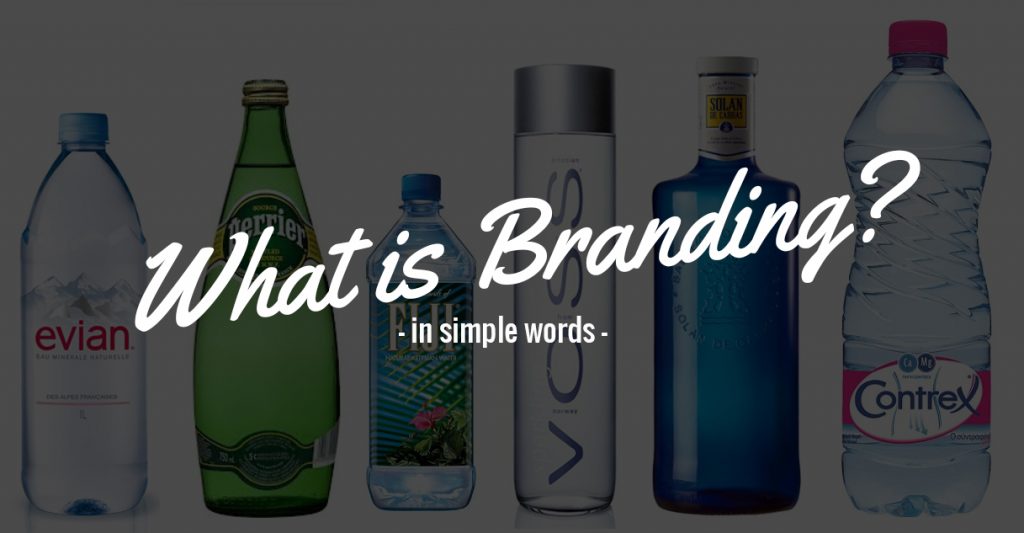Branding is more than just a logo or a catchy slogan—it’s the entire experience your customers have with your company, product, or service. As the marketplace becomes increasingly competitive, understanding and mastering the art of branding has never been more crucial. This guide will delve into the multifaceted world of branding, offering insights and strategies that cater to beginners keen on developing a strong brand presence. Whether you’re starting from scratch or looking to refine an existing brand, this ultimate guide will equip you with the knowledge and tools to succeed.
In today’s competitive market, a strong brand can set you apart from the competition and create a lasting impression on your audience. This ultimate guide to branding for beginners will walk you through everything you need to know about building a successful brand, from understanding the basics to implementing advanced strategies.
What is Branding?
Branding is the process of creating a unique identity and image for a product, service, or company in the consumer’s mind. It encompasses every aspect of a company’s interaction with its audience, from visual elements like logos and color schemes to the tone and style of communication. But why is branding so essential? Let’s explore.
Branding builds recognition and loyalty. When consumers recognize a brand, they are more likely to trust it. A strong brand sets you apart from competitors, allowing you to communicate your values and engage with customers on a deeper level. Branding isn’t just about visibility; it’s about making a lasting impression that fosters loyalty and encourages repeat business.
Moreover, branding can boost your marketing efforts. It’s the backbone of your advertising and promotional activities, ensuring that your message is consistent and resonates with your target audience. By aligning your brand with the needs and desires of your customers, you create more effective marketing campaigns that can lead to increased sales and growth.
Branding also plays a crucial role in defining your company’s culture. It influences how employees interact with customers and each other, shaping the overall experience your company provides. A well-defined brand cultivates a positive work environment and attracts talent that aligns with your company’s values.
In essence, branding is the art and science of creating a meaningful connection between your company and its audience. It’s about understanding your customers’ needs and crafting a narrative that speaks to them, all while differentiating yourself in a crowded marketplace. Whether you’re building a personal brand or a multinational corporation, the principles of branding remain the same: authenticity, consistency, and a clear understanding of your audience.

Branding means building the image and awareness of the brand in the minds of customers.
3 Important Elements in Branding
Some important elements in branding include:
- Brand Positioning: This is how a brand positions itself in the marketplace and in the minds of its customers. A clear positioning helps attract the right target customers, build loyalty, and differentiate itself from competitors.
- Brand Values: Core values help connect emotions between brands and customers
- Brand Identity: Including logos, slogans, sounds, colors and even scents, helps customers recognize and remember the brand.
What is Branding doing?
Branding includes all activities from market research, brand identity design, to marketing strategy… Branding requires creativity and consistency to create a consistent and strong brand image in the market. Therefore, to successfully brand, businesses need to answer the following basic questions: What is the company’s mission? What are the product benefits and features? What do customers think of the company? What keeps them engaged?
Distinguishing Brand, Branding, Brand Identity and Brand Guidelines
Brand
Brand is the way customers feel, think about and associate with a business when referring to a product/service. It includes all tangible elements (brand logo, product) and intangible elements (emotion, value, prestige, reputation).
Branding
Branding is the process of building and managing a brand. It is a set of specific activities that a business performs to create and maintain the image, identity, and perception of the brand in the minds of customers. Branding is not just about creating a logo or slogan but also includes implementing marketing strategies, public relations, user experience design, and all other forms of communication with customers. The goal of branding is to create a consistent and strong brand image that helps the brand stand out and be easily recognized in the market.
Brand Identity
Brand identity is the collection of all elements that a company creates to portray the right image to its consumers. It encompasses everything from the visual elements like logos and color schemes to the tone of voice and overall personality of the brand. Such as logos, colors, fonts, symbols, product packaging, sounds, characteristic scents… Brand identity helps customers recognize your brand immediately when next to competitors. If Branding is the way businesses build brand image, Brand Identity is the specific tools used to express that image. A strong brand identity is essential for creating a consistent and recognizable presence in the market.
To develop a compelling brand identity, start by defining your brand’s core values and mission. What do you stand for? What unique value do you offer to your customers? These foundational elements will guide every aspect of your brand identity, ensuring that it aligns with your overall business goals.
Visual elements are a crucial component of brand identity. Your logo, color palette, and typography should be carefully chosen to reflect your brand’s personality and resonate with your target audience. Consistency is key—ensure that these elements are used consistently across all platforms and marketing materials to create a cohesive and recognizable brand image.
In addition to visual elements, consider the tone and style of your communication. Your brand voice should reflect your brand’s personality and values, whether it’s formal and professional or casual and friendly. Consistent messaging across all channels helps reinforce your brand identity and build trust with your audience.
Brand Guidelines
Brand guidelines, also known as a brand style guide, are essential for maintaining consistency in your brand identity. They provide clear instructions on how to use your brand elements, ensuring that everyone within your organization adheres to the same standards.
Your brand guidelines should include detailed information on your logo usage, color palette, typography, and imagery. Specify how and where these elements should be used, and provide examples of both correct and incorrect usage. This ensures that your brand maintains a consistent appearance across all platforms and marketing materials.
In addition to visual elements, include guidelines for your brand voice and messaging. Define the tone and style of your communication, and provide examples of how your brand voice should be applied in different contexts. This helps ensure that your messaging remains consistent and aligned with your brand identity.
Brand guidelines are a valuable resource for your marketing team, designers, and anyone else involved in creating content for your brand. By providing clear instructions and examples, you empower your team to create cohesive and impactful brand experiences.

Logo, color, sound, signature scent… are Brand Identity.
The History of Branding
Branding has evolved significantly over the centuries, from ancient practices to modern-day strategies. Understanding its history provides valuable insights into its current significance and future trends.
The term “branding” originally referred to the practice of marking livestock with a hot iron to signify ownership. This practice dates back to 2,000 BC in ancient Egypt. Over time, the concept of branding expanded to include various marks and symbols used by craftsmen to identify their work. In medieval Europe, guilds used unique symbols to signify quality and origin, laying the foundation for the trademarks we recognize today.
The Industrial Revolution of the 18th and 19th centuries marked a significant turning point in the history of branding. As mass production became the norm, businesses needed ways to differentiate their products from competitors. This era saw the birth of many iconic brands, some of which still exist today. Companies like Coca-Cola, Kellogg’s, and Ford pioneered the use of branding to build consumer trust and loyalty.
The 20th century introduced new media channels, such as radio and television, that revolutionized branding. Brands could now reach wider audiences and create emotional connections through storytelling and advertising. This period also saw the rise of brand personalities, where companies used mascots and characters to embody their brand values and engage consumers.
The digital age has transformed branding yet again. With the advent of the internet and social media, brands have more opportunities to interact with consumers. Online platforms allow for real-time engagement and feedback, enabling brands to adapt and evolve quickly. Digital branding strategies now include search engine optimization (SEO), influencer partnerships, and content marketing, all aimed at enhancing brand visibility and reputation.
As we look to the future, branding continues to evolve, with trends such as sustainability, personalization, and inclusivity shaping the way brands connect with audiences. Understanding the history of branding helps us appreciate its importance and anticipate the innovations that lie ahead.
The Importance of Branding
In today’s competitive marketplace, branding is more essential than ever. But why does it matter so much? What makes it a critical component of business success?
First and foremost, branding creates differentiation. In a world where consumers are bombarded with choices, a strong brand stands out. It communicates what makes your product or service unique, helping potential customers make informed decisions. This differentiation is crucial for establishing a competitive edge and positioning your brand as a leader in your industry.
Branding also builds trust and credibility. A well-defined brand conveys professionalism and reliability, which are key factors in gaining consumer trust. When customers recognize and trust a brand, they are more likely to choose it over competitors. Trust is the foundation of customer loyalty, and loyalty leads to repeat business and long-term success.
Furthermore, branding enhances customer recognition and recall. Consistent branding elements, such as logos, colors, and messaging, make it easier for consumers to remember and identify your brand. This recognition is vital for attracting and retaining customers, as it keeps your brand top of mind when they are ready to make a purchase.
Branding also plays a significant role in emotional connection. Brands have the power to evoke emotions and create meaningful associations with consumers. By aligning your brand with specific values and experiences, you can foster a deep emotional connection that resonates with your audience. This connection strengthens customer relationships and drives engagement.
In addition to its external benefits, branding impacts internal company culture. A strong brand provides a clear sense of purpose and direction, guiding employees in their interactions with customers and each other. It fosters a positive work environment and attracts talent that shares your company’s values.
Ultimately, branding matters because it influences every aspect of your business, from marketing and sales to customer service and employee morale. It’s not just about creating a logo or a catchy tagline; it’s about crafting a holistic identity that resonates with your audience and drives business success. By investing in branding, you’re investing in the future of your company.
Building a strong brand brings significant benefits to businesses, customers, and consumers, specifically:
For businesses: Branding helps businesses build prestige and a trustworthy image in the eyes of customers, along with creating a difference from competitors in the market and helping businesses position their brand as well as the value of their products/services.
For customers: Branding helps customers make purchasing decisions more easily. A brand with a clear message and strong brand identity will help customers quickly recognize and choose products that suit their needs without having to compare too much.

Branding helps consumers make decisions easier
5 Important Steps in the Branding Process
To implement an effective branding strategy, businesses can refer to the detailed branding process below:
Step 1: Market Research
Market research helps businesses understand their competitors, identify target customers and understand market trends. This is the foundation for building an effective brand strategy, ensuring that the brand is consistent with the needs and expectations of the market.
Step 2: Identify Core Values
Businesses need to clearly define their brand’s mission, vision, and core values. These elements will shape the brand’s message, create consistency, and help the brand communicate effectively with customers.
Step 3: Brand Identity Design
Brand identity design includes creating a logo, choosing colors, fonts, and developing other visual elements. Brand identity needs to be consistent and memorable to help the brand be easily recognized and remembered.
Step 4: Implement Brand Development Strategy
Businesses need to develop communication plans, implement marketing and Advertising campaigns, and maintain customer relationships. These activities help brands reach target customers and build loyalty.
Step 5: Evaluate and Adjust
Continuously monitor and evaluate branding effectiveness, and collect customer feedback to adjust strategies. This ensures the brand is always improving and adapting to market changes.
Current Branding Trends
With rapid changes in technology, brands need to embrace the latest branding trends to strengthen their position in the competitive market.
Trends in Branding
The branding landscape is constantly evolving, and staying ahead of trends is crucial for maintaining a competitive edge. Some current trends in branding include:
- Personalization: Brands are increasingly focusing on personalized experiences to build stronger connections with customers.
- Sustainability: Consumers are becoming more conscious of environmental issues, and brands that prioritize sustainability are gaining favor.
- Authenticity: Authenticity and transparency are becoming more important as consumers seek genuine and trustworthy brands.
- Digital Transformation: The rise of digital technology is reshaping how brands interact with customers, with a focus on online and mobile experiences.
Building a Brand on Social Media
In the digital age, social media has become a powerful tool for brands to reach and interact directly with customers. Platforms such as Instagram, Facebook, TikTok, etc. are not only promotional channels but also places for brands to build relationships and loyalty with customers. According to a 2023 Sprout Social report, 64% of consumers want brands to engage with them on social media and 78% are willing to buy products from brands that have an active presence on these platforms.
Social media platforms offer powerful opportunities to connect with your audience and build brand awareness. By engaging with your audience on social media, you can humanize your brand, foster community, and drive organic growth.
To maximize your social media efforts, choose platforms that align with your target audience and industry. Share engaging content, interact with followers, and participate in conversations relevant to your brand. Utilize social media analytics to track performance and adjust your strategy as needed. Consistent and authentic engagement can strengthen your brand presence and create loyal brand advocates.

Branding on social media is an effective method to reach customers more easily.
Responsible Branding
Consumers are increasingly concerned about the social and environmental responsibilities of brands. Building a responsible brand not only helps businesses meet the growing needs of customers but also creates a difference in the market. According to Nielsen, 73% of global consumers said they are willing to change their consumption habits to reduce their environmental impact, and 66% are willing to pay more for products from brands with a commitment to social responsibility.
Immersive brand experiences through virtual reality
Virtual Reality (VR)) and augmented reality (AR) are ushering in a new era of brand experiences. These technologies allow consumers to experience products and services in a vivid, realistic way without having to physically visit them. According to Statista, the global VR market is expected to reach $44.7 billion by 2024, demonstrating the strong growth and great potential of this technology in brand building.
Simplify your brand logo image
Brands are moving towards simplifying their logos to increase their recognizability and align with the minimalist design trend. This not only makes the logo more recognizable on digital platforms, but also creates a more modern, sophisticated look. A study from The Branding Journal found that simple and minimalist logos are more memorable. 13% higher compared to complex logos.
Brand Personification
Brand personification is a growing trend where brands develop a personality, voice, and story that resembles a real person. This helps create a stronger emotional connection with customers. According to a study by Harvard Business Review, brands with a clear and human personality are 20% more likely to create engagement and significantly increase customer loyalty.
3 Case studies on successful brand building
If you are still in the process of “incubating” a branding plan but don’t know how to start, take ideas from the 3 most successful brand positioning case studies today:
Apple: From products to lifestyle
Apple is one of the best examples of successful branding globally. Starting with technology products with exquisite design and superior performance, Apple has expanded its brand into a lifestyle. Users not only buy products but also experience the special value that this brand brings.

Apple has always been a “luxury” technology brand in the eyes of consumers.
The core elements of Apple’s branding strategy are simplicity, sophistication, and a strong focus on user experience. Apple products are always designed to feel “exclusive” and “luxurious,” which has helped them build a loyal customer base. According to Forbes, Apple has consistently been on the list of the world’s most valuable brands, with an estimated brand value of $241.2 billion by 2023.
Nike: The Brand of Power and Inspiration
Nike is a great example of building a brand based on inspiration and emotional connection with customers. The slogan “Just Do It” is more than just a slogan, it has become a powerful call to action, motivating consumers to push their limits. Nike has successfully created a brand image that represents strength, endurance, and victory.

Nike builds inspirational stories from famous athletes
Nike’s marketing strategy focuses not only on sports products but also on telling inspiring stories through famous athletes and social marketing campaigns. As a result, Nike has become a global icon with an estimated brand value of $46.3 billion by 2023.
Coca-Cola: A Sustainable Brand Heritage
Coca-Cola is one of the oldest brands and also one of the best examples of brand sustainability. Founded in 1886, Coca-Cola has built a strong brand through Creative advertising and a message of freshness and happiness.

Coca conveys a message of love during family reunions
Coca-Cola has been very successful in associating its brand with happy moments, especially during the holidays. The image of Coca-Cola along with Santa Claus in advertising campaigns has become an indispensable symbol of every Christmas season. With consistency in its message and marketing strategy, Coca-Cola has maintained its leading position in the global beverage industry.
Branding Mistakes to Avoid
Common Branding Mistakes
Branding mistakes can have a significant impact on a business’s reputation and success. Some common branding mistakes include:
- Inconsistent Branding: Inconsistency in visual elements, messaging, and tone can confuse customers and weaken the brand’s identity.
- Ignoring the Target Audience: Failing to understand and cater to the target audience can result in a disconnect between the brand and its customers.
- Overcomplicating the Brand: A complex and cluttered brand identity can be difficult for customers to understand and remember.
- Neglecting Brand Maintenance: Failing to regularly review and update the brand can lead to a stale and outdated image.
How to Avoid Branding Mistakes
To avoid common branding mistakes, consider the following tips:
- Maintain Consistency: Ensure that all brand elements are consistent across all channels and touchpoints.
- Understand Your Audience: Conduct market research to understand the needs and preferences of your target audience.
- Keep It Simple: Create a clear and straightforward brand identity that is easy for customers to recognize and remember.
- Regularly Review and Update: Continuously monitor the brand’s performance and make updates as needed to stay relevant and competitive.
The Impact of Technology on Branding
Technology is playing a significant role in shaping the future of branding. Advances in artificial intelligence, data analytics, and digital marketing are enabling brands to create more personalized and targeted experiences. Social media platforms and online communities are also providing new opportunities for brands to engage with customers and build loyalty. As technology continues to evolve, brands must adapt and innovate to stay relevant and competitive.
Conclude
Branding is a powerful tool that can set your business apart and create a lasting impression on your audience. By understanding the fundamentals of branding and implementing effective strategies, you can build a strong and memorable brand. Whether you’re just starting out or looking to refresh your brand, this ultimate guide provides the knowledge and insights you need to succeed. Remember, branding is an ongoing process that requires consistency, creativity, and a deep understanding of your audience. Embrace the journey and watch your brand thrive.
So above MarkKnow has shared with readers the basics surrounding the question of what is Branding. Hopefully, the above article will be useful information for readers. In addition to answering readers’ questions about what is Branding, readers can also refer to more knowledge about Marketing and many other fields on our website. Thank you!
FAQs
What is the difference between branding and marketing?
Branding is the process of creating a unique identity for a business or product, while marketing involves promoting and selling that product or service. Branding focuses on building a long-term relationship with customers, while marketing is more about short-term tactics to drive sales.
How long does it take to build a strong brand?
Building a strong brand takes time and effort. It can take several months to years to establish a brand identity, build brand equity, and gain customer loyalty. Consistency and ongoing investment in branding activities are key to long-term success.
Can small businesses benefit from branding?
Absolutely! Branding is important for businesses of all sizes. A strong brand can help small businesses stand out in a competitive market, attract customers, and build loyalty. Investing in branding can lead to long-term growth and success.
What are some examples of strong brands?
Some examples of strong brands include Apple, Nike, Coca-Cola, and Amazon. These brands have successfully built a unique identity, created positive associations, and maintained consistency across all touchpoints.
How can I measure the success of my branding efforts?
The success of branding efforts can be measured through various metrics, including brand awareness, customer loyalty, and perceived quality. Surveys, market research, and sales data can provide valuable insights into the brand’s performance.
What should I do if my brand is not resonating with my target audience?
If your brand is not resonating with your target audience, it’s important to conduct market research to understand the reasons why. This may involve reevaluating your brand identity, messaging, and positioning. Making adjustments based on feedback and insights can help improve the brand’s relevance and appeal.
Comment Policy: We truly value your comments and appreciate the time you take to share your thoughts and feedback with us.
Note: Comments that are identified as spam or purely promotional will be removed.
To enhance your commenting experience, consider creating a Gravatar account. By adding an avatar and using the same e-mail here, your comments will feature a unique and recognizable avatar, making it easier for other members to identify you.
Please use a valid e-mail address so you can receive notifications when your comments receive replies.
